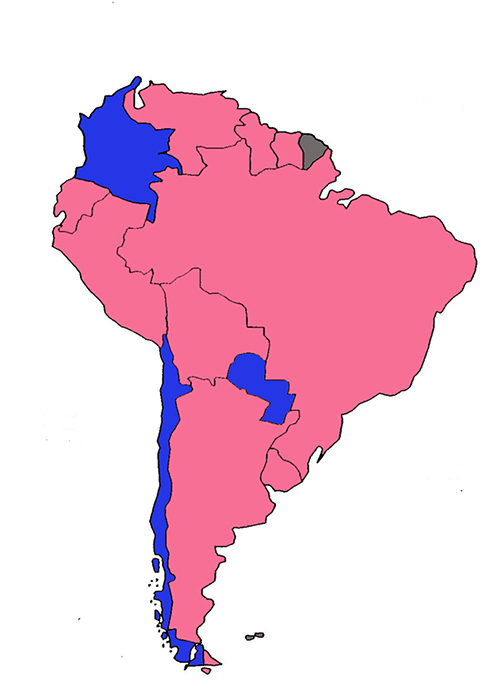Leaving Latin America, I want to comment on a phenomenon that seems to be sweeping this part of the world. It is the so called pink tide, the simultaneous occurrence of a left swing in the politics of the most countries on this continent. It is pink of course because bloody red is somehow appropriated by the communists, whereas the socialists can be safely painted in pink. Latin America has been under robust American control for many years, belonged to the immediate American sphere of interests. But especially in the most recent years, after the end of the Cold War, the situation here changed radically and one after another pieces of the domino fell as socialist or left-wing presidents won elections.
There are 12 independent countries in South America. Today there are left-wing governments in 9 of them, and Michelle Bachelet just won the first round in presidential election in Chile and is likely to win the second, making it 10 out of 12.
This is how it looks:

Continue reading Pink tide